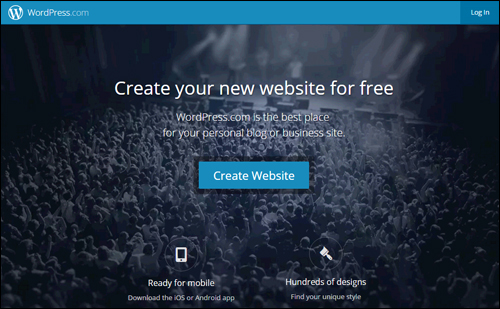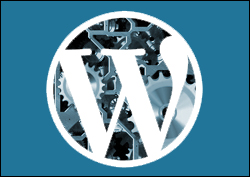

Welcome to Part 3 of our Web Site Traffic Blueprint article series, where we show you how to create an automated traffic machine using WordPress.
In Part One of this series, we explained why using an expertly configured WordPress site is the key to generating automated web traffic …
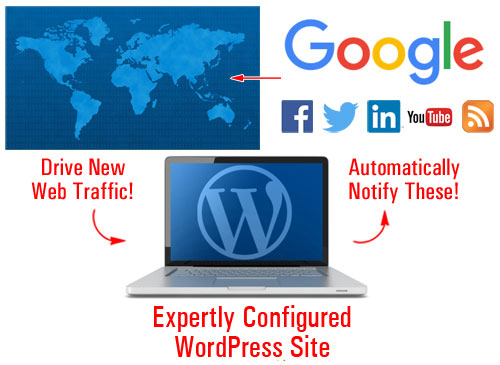

(With an expertly configured WordPress web site, all you have to do to start driving traffic is publish great content on a regular basis!)
In Part Two, we focused on the setup phase of the traffic automation process. We explained the best way to start if you don’t have a website yet, how to set everything up if you already have a site, and what to do if your existing site has been built using WordPress.
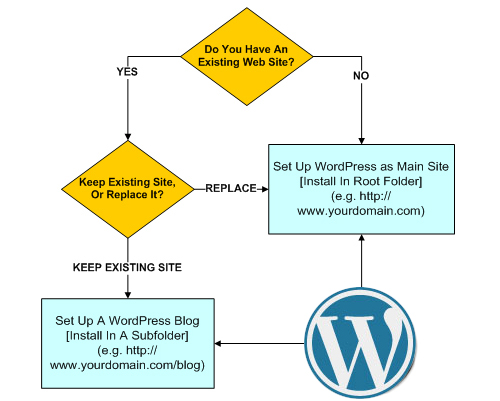

(In Part two we show you how to set up WordPress on your domain)
In this section, we will discuss the configuration phase of the traffic system. We explain how a WordPress site should be configured in order to get new traffic automatically when you begin to post new content on your site.
WordPress Traffic Automation System – Configuration Phase
Finding ways to drive more traffic to one’s website is often cited by many website owners as the greatest challenge they face online. With competition making business survival progressively tougher businesses are researching any advantage they believe will help them increase their competitiveness online.
Being able to generate traffic on demand can provide website owners with a huge advantage. For business owners, having an expertly configured website means having a significant competitive advantage from the word “go”.
Configuration Is The Difference
There is a significant difference between an expertly configured WordPress site and a site that has been professionally set up by a website-building expert but not necessarily configured to take advantage of everything WordPress has to offer.
Here is a simple way to understand the main difference:
An expertly configured WordPress site gives you a professional web presence and an automated online business marketing system!
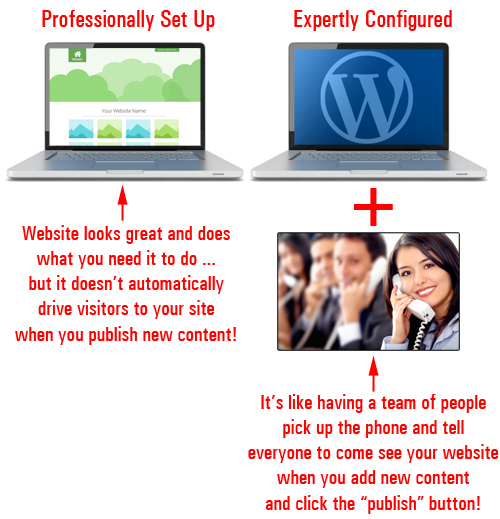

(An expertly configured website gives you a professional web presence with an automated online business marketing process!)
Not only is more labor required to build and integrate an automated online business marketing process into your website, it also takes a special kind of expert knowledge.
To illustrate this here’s a story.
Knowing Where To Tap
All was moving along in the gizmo workshop when things suddenly came to a stop.
As no one could figure out what went wrong, the floor manager decided to call in an expert.
The expert arrived shortly after being summoned and, without uttering a word, went directly to the control box. After staring at the board for no more than 2 minutes, the expert then took out a tiny little hammer from his tool box and made a very gentle tap near the right corner of the box.
Immediately, everything started working as before.
The manager was grateful and relieved as he thanked the expert, who left just as quickly as he had arrived.
A couple of days after resolving the incident, the factory manager received a request for payment of $5,000.
The manager rang back the expert, demanding to know why they were being charged such an exorbitant fee for so little time spent delivering such minimal amount of work and then requested an itemized invoice before hanging up.
The next day, a bill of payment arrived and was placed in the manager’s intray. Upon opening the envelope, this is what he saw:
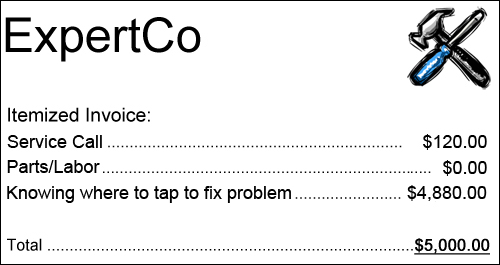

The number one challenge most businesses face online is being able to consistently drive web traffic to their sites.
How much money did the widget factory stand to lose when the machines stopped functioning and no one in the business had the expertise required to fix it? Did the expert not have the right to demand fair compensation for investing years developing the knowledge, skills and expertise that enabled him to fix a potentially costly problem?
Similarly, if you could have a WordPress website set up so all you ever had to do is publish new content and search engines, social followers from sites like Facebook and Twitter and dozens of other online properties would be immediately notified, how much time and money would this save you?
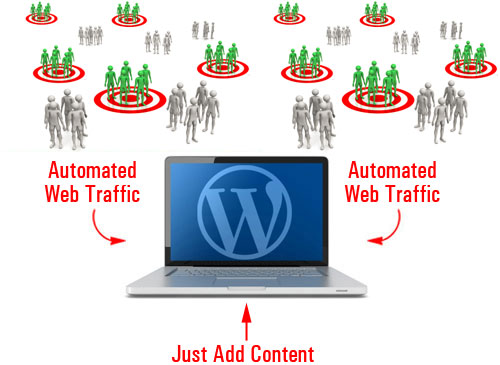

(How much better would your business be if you could automate the process of attracting new visitors to your site?)
While experts often make complex things look easy, it rarely is that simple or easy when you are trying to work things out.
Expertly configuring a WordPress site involves more than just installing a website and configuring some of the site settings for clients. It also requires knowing where to tap! In other words, knowing things like:
- Which programs you need to install to add various functionalities to your site.
- Which 3rd-party services need to be set up to get desired results
- Which options you need to configure in order to make sure things will work as envisioned, etc.
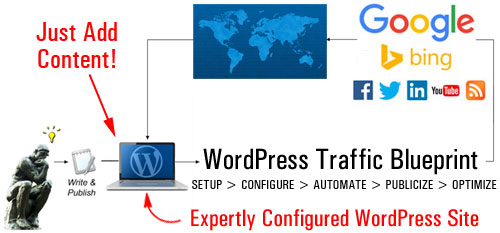

(Generating traffic automatically with WordPress is a process that requires knowledge and expertise)
Although this part of the WordPress traffic automation system may not seem technically difficult, it can be quite involved. This is because it’s not as easy as installing one or two plugins, clicking a button … it’s all this and much more.
Expertly configuring your website involves the integration of a number of different components such as your web hosting server, your web site, and various third-party sites and services …
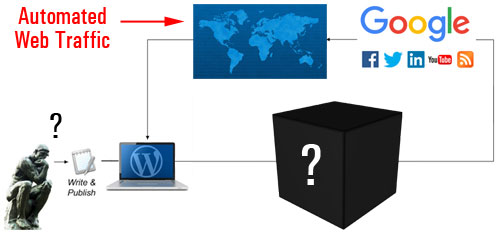

(The configuration phase involves more than just configuring some settings in WordPress)
If all the steps involved in the configuration process were to be flowcharted, it would look something like this …
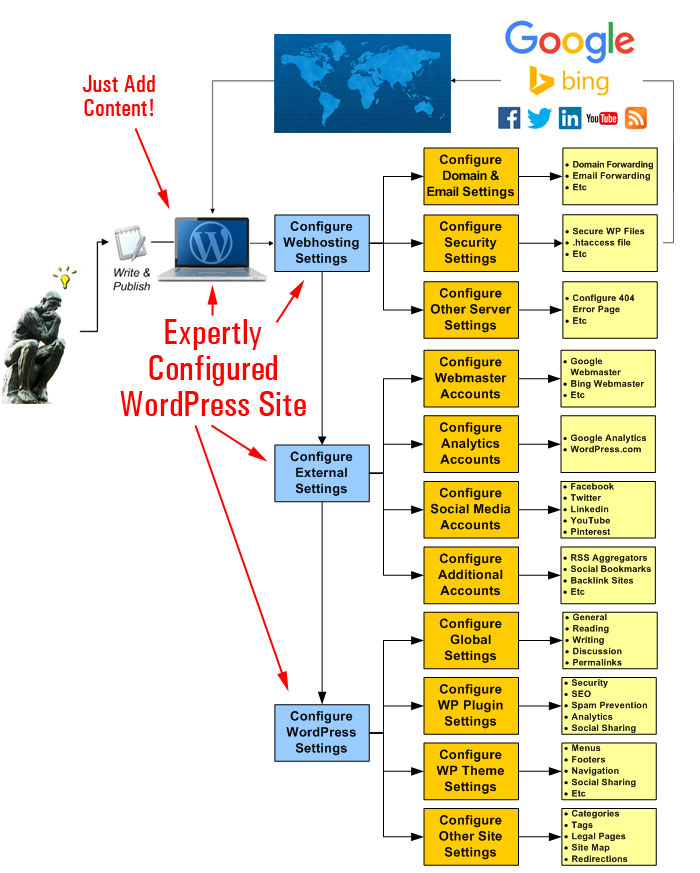

(A simplified flowchart of the configuration process)
Let’s take a better look at these areas.
Web Server Configuration
We’re not talking about the process of configuring your web-hosting account for installation purposes (this is normally done during the Setup phase). What we are talking about, is configuring settings in your server that affect how you will handle all web traffic …
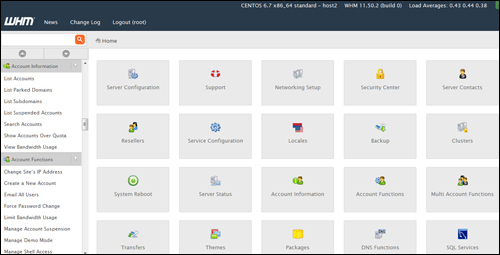

(During the configuration phase, your server settings need to be checked for handling both good and bad traffic)
Not all traffic is beneficial traffic. Some of the web traffic your business will attract will be unwelcome traffic like bot spam, malicious threats, bot-hacking attempts, etc.
This area of the configuration process, therefore, is about evaluating your needs, planning for good and unwelcome traffic and then adjusting settings in your server accordingly. This includes looking at things like server-level spam protection and preventing security threats, to configuring your domain and email forwarding, setting up error page redirections, etc …
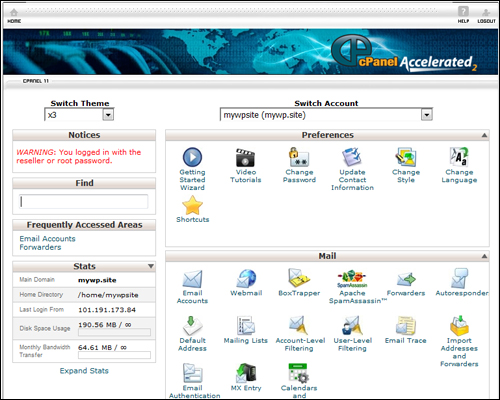

(Have you configured your control panel settings for handling things like email forwarding, page errors, etc?)
After your server settings have been fine-tuned and configured (if required), the next step is to set up and configure various third-party sites.
External Services
The basic concept of adding external sites is that all content should be posted to one central location (your site) and from there, syndicate automatically to other parts of your web traffic generation system, or notify traffic-related web properties and services.
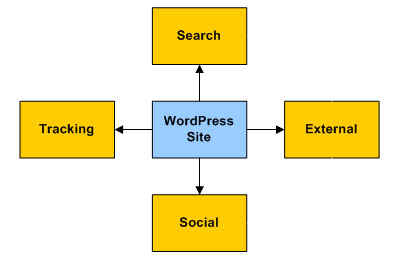

Once you add these external platforms to your system, content linking back to your website gets automatically added to search, social and aggregator sites. Your content and site will be given additional exposure to new sources of traffic and new audiences.
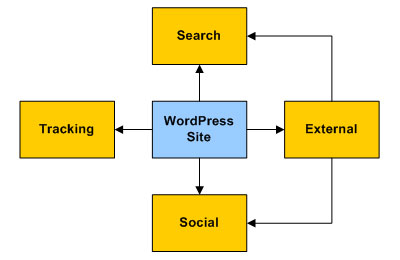

Some sites and online solutions will need to have accounts set up before configuring your WordPress settings to help save time and some will need to be done later, during the automation phase.
For example, you will want to set up the following accounts:
Google Webmasters
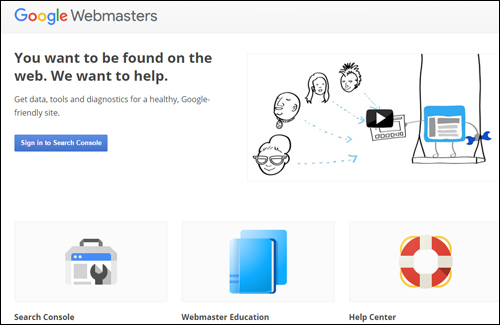

(Google Webmaster Tools)
Google Search Console lets you tell Google about your site’s pages, submit XML sitemaps for automatic page indexing, and provides you with a range of useful information, SEO tools and diagnostic reports about your website.
After setting up your Google Webmaster Tools account, you can use your information with traffic-related settings and notifications in WordPress and other applications.
Google Analytics
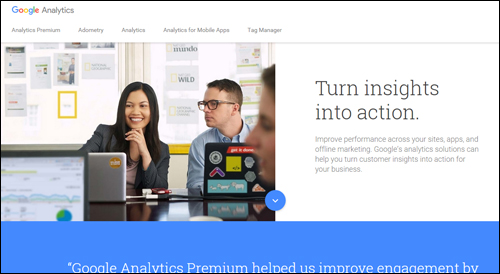

(Google Analytics)
Google Analytics lets you improve your website’s traffic results, SEO, user engagement, marketing efforts, and more, by tracking all user behavior, pages visited, keywords searched for, search engine and social media referrers, etc.
Once your Google Analytics account and site details are set up, account information can be added to WordPress via plugins used with other applications.
Bing Data And Tools
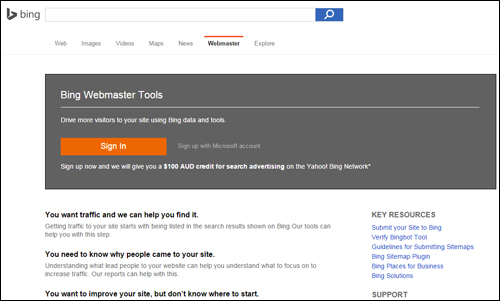

(Drive more traffic with Bing Webmaster Tools)
Bing Webmaster Tools is similar to Google Search Console. After setting up your account with Bing, you can use your details with traffic settings and notifications in WordPress and other applications.
WordPress.com
(WordPress.com)
As explained in Part 2, WordPress offers website owners a self-hosted (WordPress.org) and a hosted (WordPress.com) option. We recommended choosing the self-hosted WordPress platform if you plan to build a professional web presence.
WordPress.com (the hosted option), however, provides a number of useful features, which various WordPress plugins can access. We recommend setting up an account at WordPress.com, therefore, and we’ll explain how to integrate these features into your traffic generation system in the next installment of this series.
Social Media And Social Bookmarking Accounts


(Syndicate your content automatically to your social media sites and social bookmarking accounts and drive new traffic to your site)
You will need your social media accounts set up in order to integrate these with your traffic generation system.
Once you have set up and configured everything, you will be able to syndicate your content automatically to your social media accounts and bring new traffic to your site.
You should set up accounts and profiles with all of the well-known social networks – Facebook, Twitter, YouTube, LinkedIn, Pinterest, etc.


There are lots of social sites you can set up accounts with. You don’t need to create accounts with all of them, just choose those that will work well with your system and/or content sharing tools.
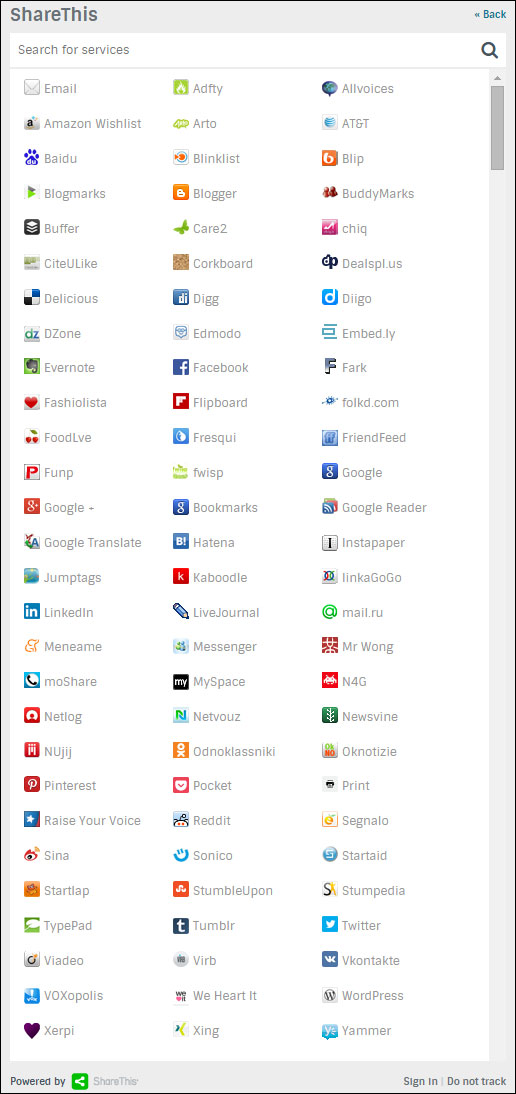

(There are lots of social bookmarking sites you can post your content to. Image source ShareThis.com)
Additional Solutions, Aggregators, Etc.
There are many new online technology platforms and content aggregators that can act as secondary-level traffic generation sources. Some are free or provide free levels, and some offer a range of pricing plans to suit different user types.
For example, here is a content aggregator site that allows you to add your WordPress site feed …
RebelMouse
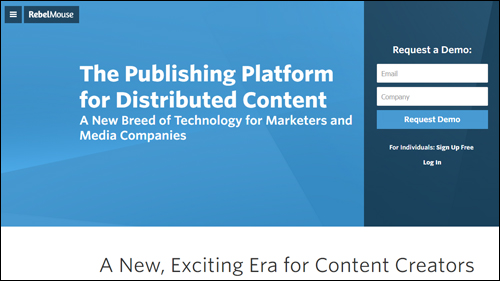

(RebelMouse – Distribute your content to social networks)
RebelMouse is a news aggregator for your RSS feeds and social profiles. Your content is displayed in a Pinterest-like format and users can follow your website.
![]()
![]()
There are various sites and platforms that can be added to your own traffic system. Please contact us if you need assistance exploring some of these further, or to discuss a configuration plan to suit your needs.
After you have configured your server settings and set up accounts with external sites, it’s time to configure your WordPress site’s settings.
WordPress Configuration
The first step in configuring your WordPress site for traffic is to ensure that your global settings have been correctly set up.
Let’s go over some of the important areas.
Global Settings
By default, your WordPress administration area includes a Settings menu that allows you to set up your site’s main settings …
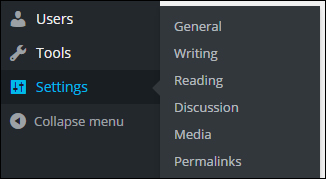

(WordPress settings menu)
General Settings
Content entered into fields like Site Title and Tagline can affect your site’s SEO, search results, etc …
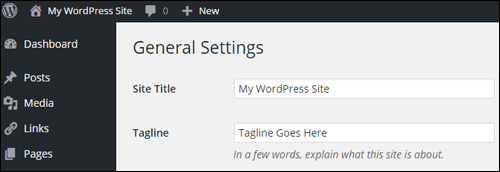

(Settings Menu – General Settings Section)
Writing
The Writing Settings section contains a powerful and often overlooked traffic notification system …
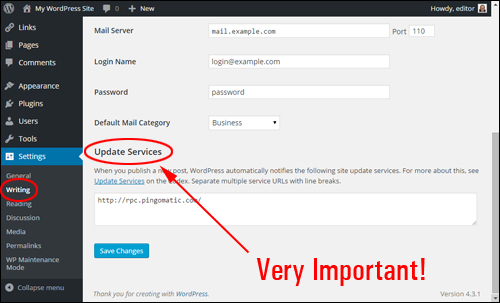

(WordPress Settings – Writing Settings)
As described below the Update Services section,
When you publish a new post, WordPress automatically notifies the following site update services …
Unless you or your webmaster have specifically chosen to prevent search engines from indexing your site – see next section, then your site will automatically notify the list of update services entered into the Update Services text area
By default, only one service is available …
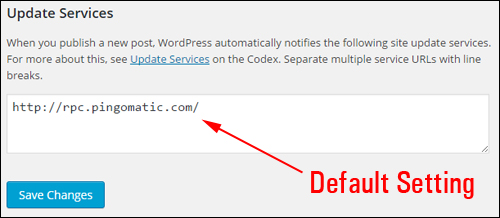

(Update Services – A Powerful Traffic Feature Of WordPress)
You can notify dozens of update services automatically with WordPress …
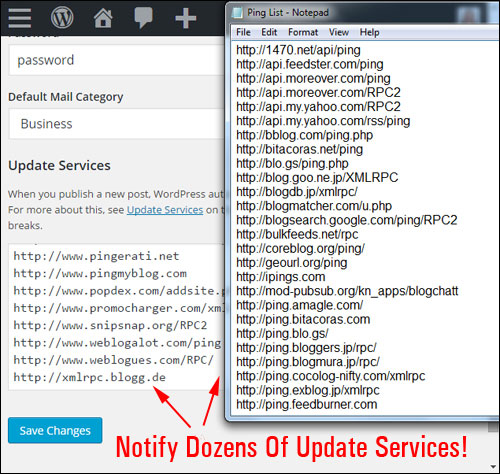

(WordPress lets you notify dozens of update services automatically!)
![]()
![]()
Download A Comprehensive List Of Ping Services For Your WordPress Site!
Click the link below to download a comprehensive list of reliable and authoritative ping services for your WordPress site or blog:
Download A List Of Ping Services For Your WordPress Site
***
Note: If you need help setting up the list of ping services on your site, we recommend using a professional web services provider. You can find professional WordPress service providers in our WordPress Services Directory.
Reading
This section affects how your content gets seen by readers when they visit your home page and blog pages.
The syndication settings in this section can influence web traffic. For example, choosing to display the full content vs summaries of your post, affects how your content displays to users in RSS feeds and RSS email campaigns, and could play a part in someone’s decision to explore your site further, and whether or not they will visit your site to get the rest of the content from summaries, or read the content in full without the need to click through to your site.
The main setting in this section as far as your traffic system is concerned is whether the Search Engine Visibility check box is enabled or not.
Generally, you want search engines to visit your site. Leaving this box unchecked allows your site to instantly ping various update services whenever new posts are published (see Writing Settings above). Unless you have a specific reason to discourage search engines from visiting your site, leave this box unchecked …
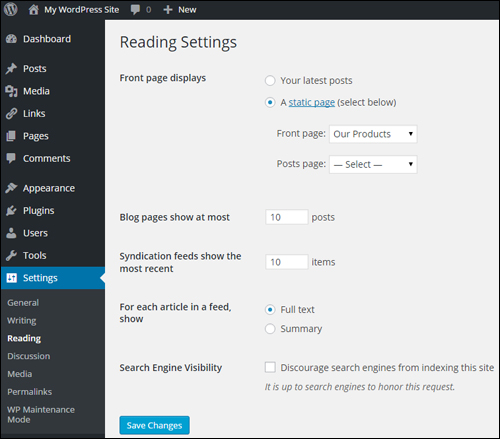

(WordPress Settings – Reading Settings Screen)
Discussion Settings
Although this section is mostly concerned with how users engage with content on your site, you have the option to allow notifications to sites linked to from your content, and to allow link notifications from other blogs (pingbacks and trackbacks). This can work for you, but it can also drive bad traffic in the form of SPAM comments …
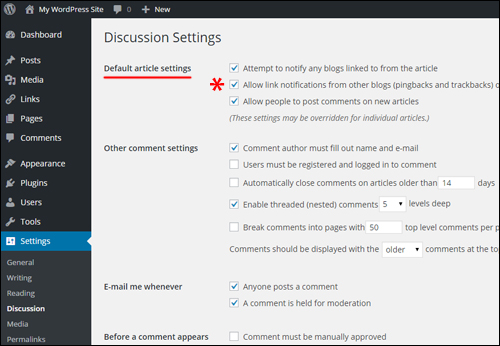

(WordPress Settings – Discussion Settings)
Permalink Settings
Your Permalink settings allow you to create SEO-friendly URLs …
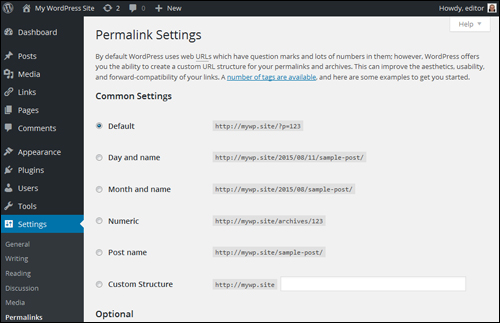

(WordPress Settings – Permalinks)
The examples below show some of the options for configuring your site’s post permalinks …
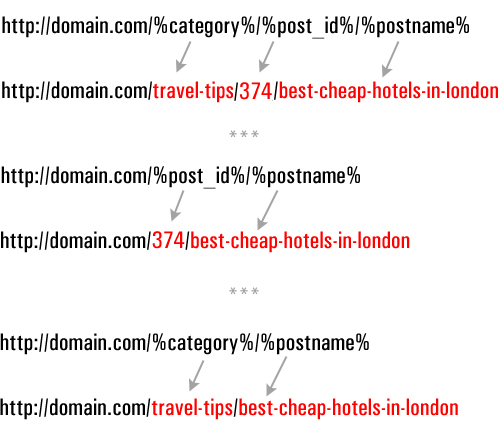

(Configuring permalinks)
For a detailed tutorial about setting up WP permalinks, go here: Improve Your WordPress SEO Using Permalinks
Plugin Settings
The WordPress developer community makes available plugins that help to add just about every kind of functionality to your website, including many plugins that improve traffic generation.
Here are some types of plugin categories that affect traffic and plugin examples
WordPress Security Plugins – Blog Defender
Once again, it’s important to configure your website for dealing with both good traffic and bad traffic. No matter what type of business you run or plan to run online and how small you think your web presence is, website security is something you simply cannot ignore.
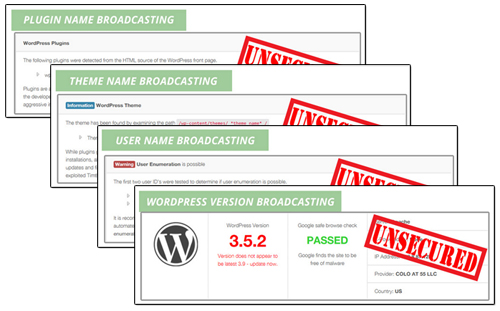

Security plugins like Blog Defender help to make your blog invisible to bots and hackers.
Go here to learn more:
SEO Plugins – Yoast SEO
SEO plugins help drive more traffic by making your web pages easier for search engines like Google and Bing to index …


(SEO plugins help increase traffic by improving your site’s ability to rank better in search engines)
A plugin like Yoast SEO can improve your SEO. Properly configured, this plugin not only makes your website easier for search engines like Google to index, it also lets you configure how your content will show up in Google’s search results and social media sites Twitter, Facebook, and Google+.
Social Sharing Plugins
Allowing visitors to easily share your content online can help boost traffic to your site, especially if you publish great content that adds value to readers.


(You can easily add social features to your site using free or inexpensive plugins)
WordPress users can easily add social sharing buttons to their website with free or inexpensive plugins.
Many social share plugins allow you to choose which sites visitors can share your content to, embed social buttons into your content, set up custom notifications, display/hide share counters (e.g. number of shares), etc. Some social sharing plugins even allow you to protect content which visitors can unlock by liking your page.
Themes
As well as configuring various plugins, many WordPress themes also include features that can help grow your traffic.
For example, as well as options and settings for configuring the design and layout of your website, many themes also provide built-in features that let you improve SEO and site navigation structure for better indexing, add analytics code, social sharing buttons, etc …
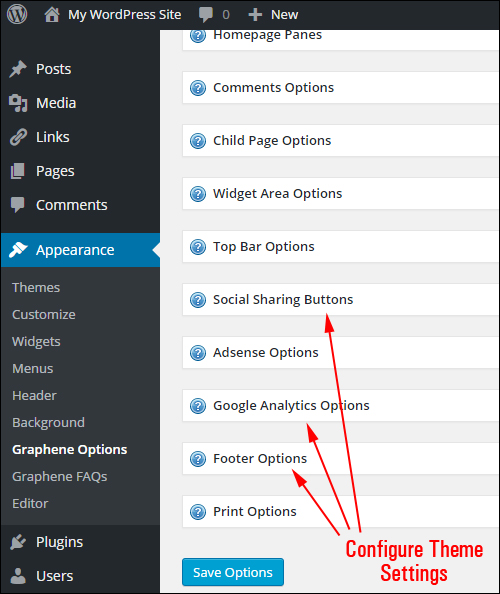

(Many themes can be configured for better traffic results)
With many themes, adding social sharing buttons and features to your pages is as easy as selecting the option to enable this functions …


(Many WordPress themes provide built-in social sharing features)
Other Areas To Configure For Increased Traffic Flow
Last (but by no means least) in the configuration process, are the areas that need to be configured outside of the global settings.
These include the following:
Legal Pages
Once again, when preparing your site for an increase in traffic, it’s important to plan not only how to handle good and bad traffic but also for all the situations that can hurt your business as more and more people find and begin to visit your website.
If you engage in any form of business online (or plan to), it’s important that your website stays compliant with legal requirements of government agencies that regulate online business practices.
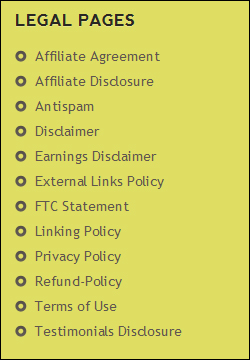

If you need help understanding the importance of having a legally compliant website, see this article:
Post Tags And Post Categories
Post tags & categories help search engines better organize and index your pages, which improves traffic.
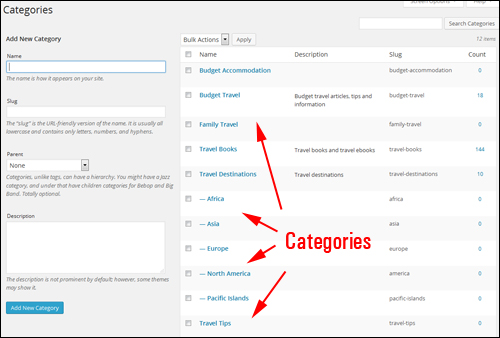

(Post categories help improve traffic by allowing search engines to classify and index your website.)
As we strongly recommend in this article, it’s best to discuss and set up your website’s post categories and tags earlier on, during the Website Planning Stage.
In the configuration phase, you will want to review and make sure that the post tags and post categories that have been set up.
Add A WordPress Site Map
A site map that lists all of your pages and posts is not only a useful navigation tool, it can also help external sites find more of your web content …
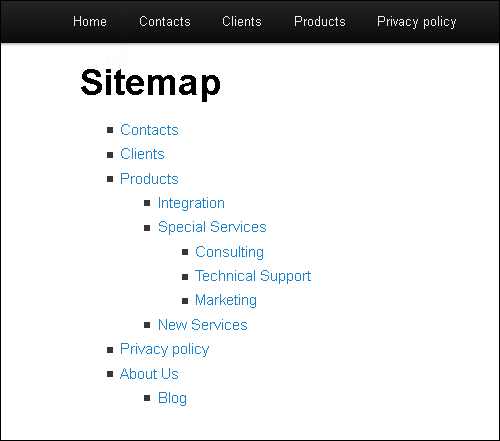

(Site Map – great for visitors and beneficial for web traffic too!)
![]()
![]()
It’s important to note that an HTML site map and an XML sitemap are not the same thing. Although Google will index your site just using an XML sitemap (which plugins like Yoast SEO can provide – see earlier section), making it easier for visitors to find more pages on your site results in increased traffic.
Your WordPress 404 Page Not Found
When online users type in the wrong URL or click on links pointing to destinations on your website that no longer exist, they will normally be presented with an error – page not found message (known as a 404 Not Found page) …
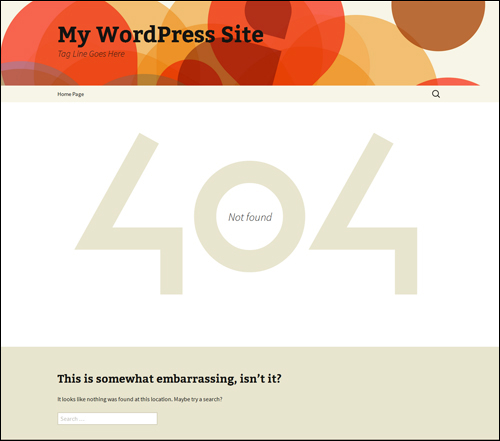

(A WordPress 404 Not Found page)
A 404 Error Page can be configured to funnel traffic to your functional web pages …
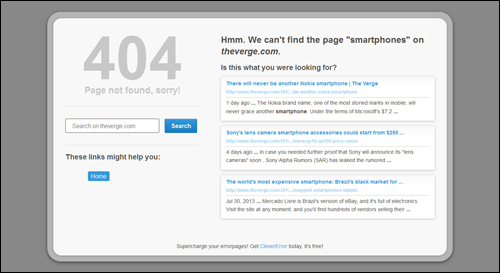

(Configuring your 404 Error Page allows you to redirect web traffic that may otherwise be lost.)
![]()
![]()
Although a 404 page can be set up on your server, there are several WordPress plugins that let you easily configure your 404 page inside your WordPress admin.
WordPress Traffic Blueprint: Configuration Process – Summary
Once you have your WordPress site expertly configured and fully set up, all you have to do then is post content consistently to attract new web traffic organically.
The process of expertly configuring your WordPress site, however, can be quite involved and elaborate and requires the configuration and integration of different components and web properties …
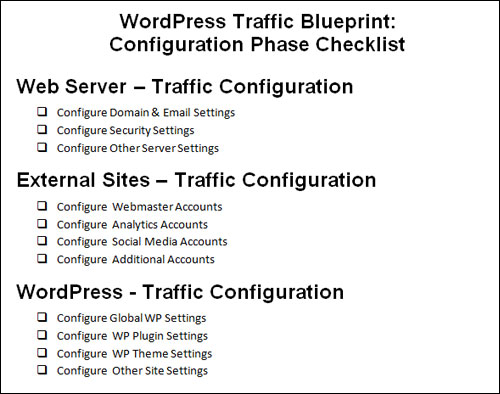

(WP Traffic System – Configuration Phase Checklist)
![]()
![]()
The kind of knowledge and expertise involved in expertly configuring a WordPress site typically takes some website professionals a long time to learn.
Once you have expertly configured your WordPress site, the next step is to automate the aspects of the process that can be automated. This step is explained in the next article in the WordPress Traffic Automation System series.
This is the end of Part 3
To read the rest of this article, click here:


![]()
![]()
This tutorial is part of an article series designed to help small business owners learn how to grow their business online with a WordPress website or blog and proven web marketing methods.
Subscribe To WPCompendium.org And Get Notified When New Tutorials Get Published!
***
"This is AMAZING! I had learnt about how to use WordPress previously, but this covers absolutely everything and more!! Incredible value! Thank you!" - Monique, Warrior Forum
***

